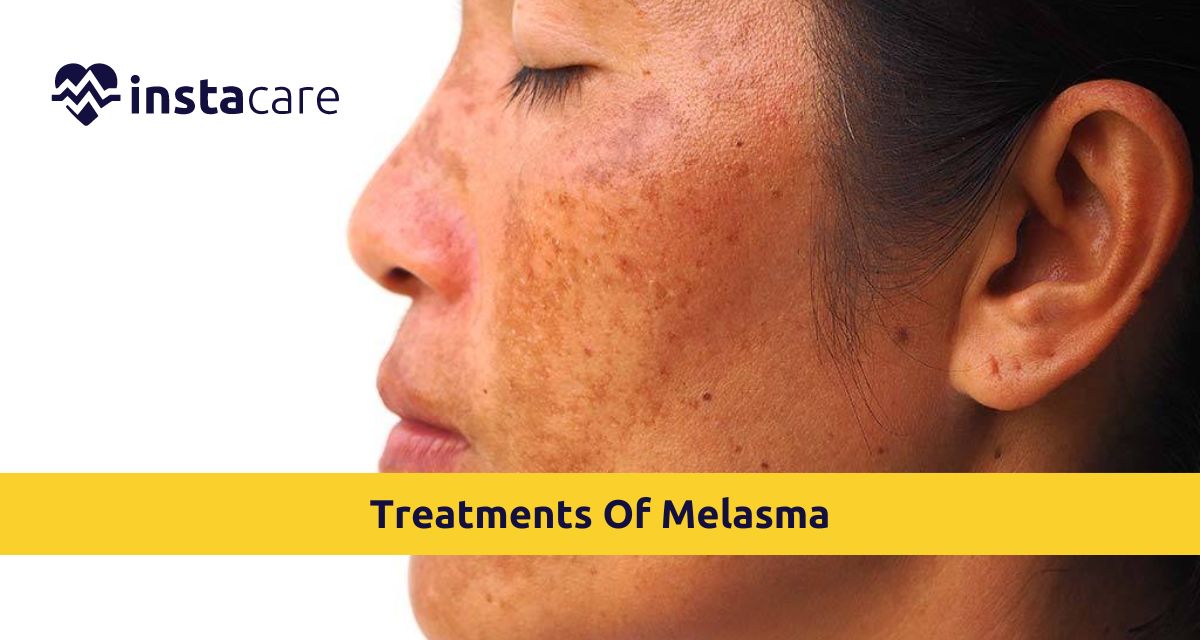Melasma is something that nearly every individual
experiences. It is a skin disorder that results in the formation of brown or
gray patches, particularly on the face. Although it can be explained that it is
not life-threatening, it has several impacts such as distress and changes in
self-esteem. It is important to know the current treatment options when it
comes to managing melasma so as to embrace a proper approach.
Understanding Melasma
An understanding of what exactly is melasma and its causes
is imperative before going into the treatment options. Which of the following
is true regarding skin problems? Melasma results from melanocyte over-activity leading to an excessive production of pigment. Photosensitivity, hormonal
influence changes, and family history of the skin disease are considered to be
the cause of melasma.
Melasma commonly affects women with dark skin tones and
mainly affect women in their childbearing age during pregnancy time or while
using hormonal pills. It may fade on its own once pregnancy occurs, or after
birth control is stopped, but many patients look forward to finding ways of
preventing such complications.
Topical Treatments You Must Know
It is, therefore, crucial to note that topically
administered treatments are one of the most common treatment plans for melasma. These include:
Hydroquinone:
Hydroquinone, which is commonly used in depigmenting
products, suppresses melanin synthesis to reduce areas with excessive
pigmentation. Hydroquinone can be purchased as an OTC product at a
concentration of as much as 2% or can be purchased by prescription at higher
concentrations of up to 4%, and commonly, they should be applied one to two
times per day.
Retinoids:
The retinoids that are formulated from vitamin A help in
compelling the dead skin layers top turn over to leave the face with lesser
melasma patches. Retinoids such as tretinoin, adapalene, and tazarotene are
other commonly prescribed medications that can be useful for the management of
melasma provided patients adhere to its regular use.
Topical Steroids:
These help lighten and decrease inflammation, and the
hyperpigmentation that often characterizes melasma. They are very useful;
however, the long-term application of topical steroids can be invasive,
therefore they are usually prescribed along with other treatments and for a
limited amount of time.
Azelaic Acid:
Azelaic acid can be beneficial in the treatment of melasma
as it acts as depigmenting and also has anti-inflammatory action. In
prescription strengths, it may be applied one to two times per day and azelaic
acid is available in formulations both by prescription and as an active
ingredient in over the counter products.
Here Are Some Procedural Treatments
In addition to topical treatments, various procedural
options are available for managing melasma:
Chemical Peels:
Melasma areas disappear naturally due to peels, which
include glycolic acid or trichloroacetic acid because they get rid of the outer
layer of the skin. Localized peels may be conducted by dermatologists and
estheticians, however, deeper peels may necessitate medical supervision.
Microdermabrasion:
It entails scrubbing the skin’s epidermis in a very delicate
manner to try to eliminate the surface layer to expose the new one. However, it
is not as intrusive as some of the chemical peels or even the laser therapy;
often the results are best seen after multiple sittings.
Laser Therapy:
Lasers work by being set on the melanin in the skin and it
is vaporized to help remove the melasma. Fractional lasers, Q-switched lasers
are targeted for melasma operations since multiple sessions will show
improvement.
Intense Pulsed Light (IPL) Therapy:
IPL directs the broad spectrum light to the targeted melanin
area, making it a viable treatment for melasma without harm to surrounding skin
tissues. However, IPL which can be effective for many people is not recommended
for those with darker skin types because IPL treatments result in
hyperpigmentation.
Combination Therapy
With treatments it is very easy to get improved outcomes when a number of different treatments are given compared to when they are given singularly. These may include the use of topical and procedures as well as reporting of such practices as sun protection in responding to melasma effectively. For instance, a regular treatment plan may include applying hydroquinone with retinoids and sunscreen in the daytime and apply chemical peels or laser treatment occasionally on the areas with excessive pigmentation.
Sun Protection
It should be noted that irrespective of the treatment
strategy identified above, the first step in the management of melasma is
protection from further sun exposure. Melasma patches can be also influenced by
other factors such as sun radiation which makes the depigmentation worse.
Sun protection, including using a broad-spectrum, water-resistant sunscreen
with an SPF 30 or higher, avoiding prolonged sun exposure, wearing protective
clothing and hats every day is imperative to patients experiencing melasma.
Choose a product that is rated at least 30 SPF and make sure
to refresh the lotion every two hours, especially in the sun and water
activity. Also, it is advised that wide-brimmed hats or any form of hat and
sunglasses should be worn to avoid exposing the face directly to the sun.
Conclusion
Though the management of melasma is not easy, effective treatments are there that can help in fading and controlling the melasma. While topical creams are available to alleviate the marks left by melasma, some people may require procedural treatment for the condition: still, everyone can consult with his or her dermatologist to choose the most effective solution.
Moreover, compliance with protection elements can help avoid exacerbations of the degree of pigmentation and enhance the effectiveness of the applied therapeutic interventions. If you are one of the many people who suffer from this condition, seek the help of your dermatologist to discuss the measures you can take, and join the thousands of others who will walk the road to the attainment of beautiful, naturally-toned skin.
Please book an appointment with the best General Physician in Lahore, Karachi, Islamabad, and all major cities of Pakistan through InstaCare, or call our helpline at 03171777509 to find the verified doctor for your disease.

